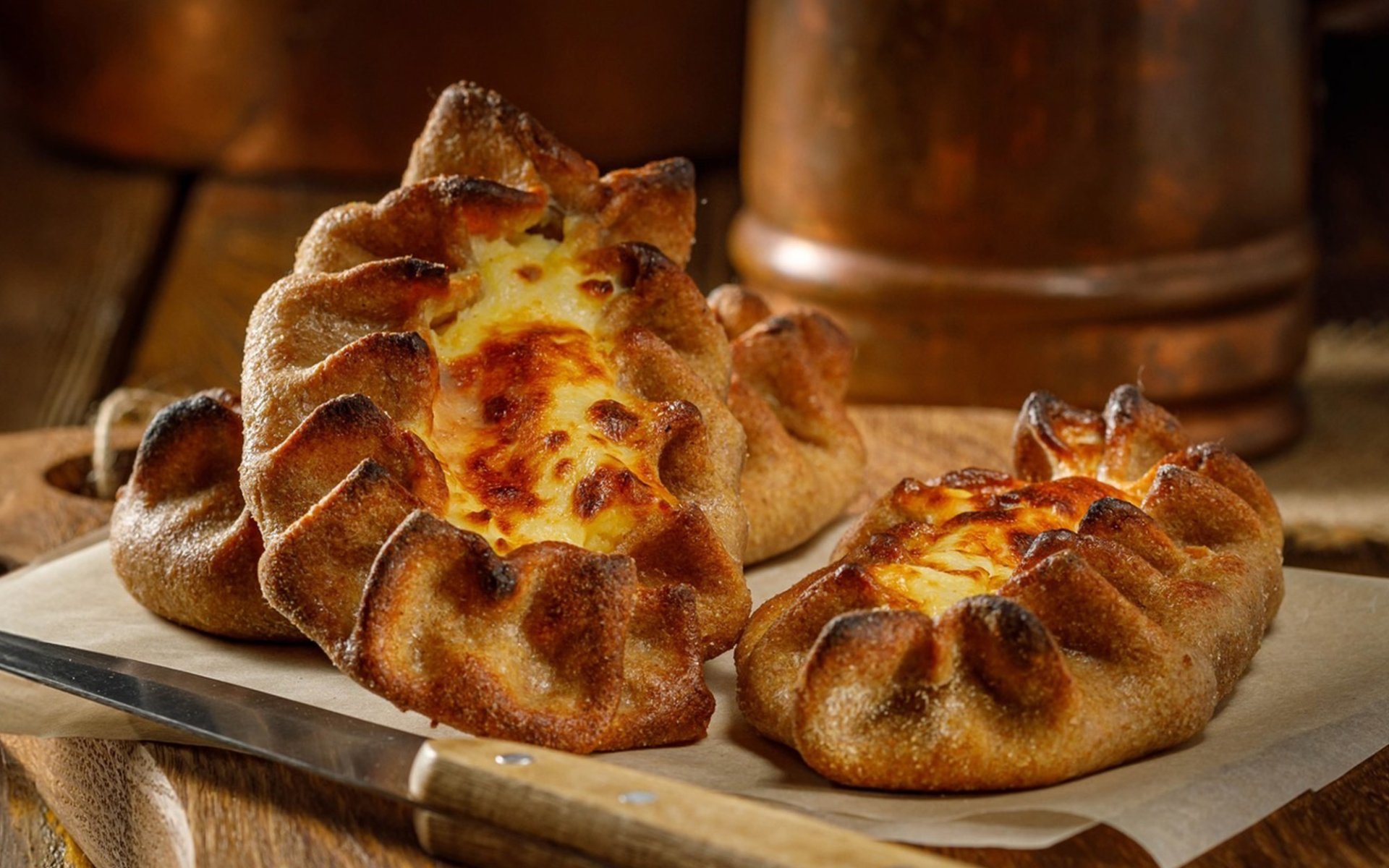Karjalanpiirakka

In the world of baked goods and traditional cuisine, Karjalanpiirakka (Kah-ryah-lahn-pee-rahk-kah), also known as Karelian Pie, stands out as a distinctive dish that profoundly reflects Finnish culture. This unique oval-shaped pastry has its origins in eastern Finland, in the region of Karelia, a historical land currently under the administration of both Finland and Russia. Today, Rimping Supermarket invites you to explore the history, taste, and charm of Karjalanpiirakka.
The Birth of a Winter Pie: Karelian Resourcefulness in the 17th Century
The origins of Karjalanpiirakka trace back to the 17th century in the Karelian region. Legend has it that during that era, this land was often blanketed by long, harsh winters, allowing only rye to withstand and thrive in the severe climate. Out of necessity to utilize available ingredients, the Karelian people developed a dish made from rye, which was none other than Karjalanpiirakka.
Early Karjalanpiirakka was a baked pastry made from thin rye crusts, filled with Porridge (a thick gruel similar to savory porridge, often made from rye or barley) and various available vegetables. It was characterized by its oval shape and distinct crimped edges around the crust.
Migration and Widespread Popularity: From Karelia to All of Finland
However, the widespread dissemination of Karjalanpiirakka throughout Finland had a significant turning point during the Winter War between 1939-1940, a part of World War II. During this time, approximately 420,000 Karelians were forced to evacuate from their homeland to mainland Finland. Naturally, they brought their culture, traditions, and culinary heritage with them. Consequently, Karjalanpiirakka became known across Finland and eventually became an integral part of Finnish cuisine.
Over time, Karjalanpiirakka became an inseparable part of daily Finnish meals. It is often served as an afternoon snack, an appetizer during various meals, or even as a breakfast item paired with tea and coffee. Bakeries throughout Finland often present Karjalanpiirakka in their unique styles to attract customers and tourists, leading to a wider variety of recipes. New ingredients are used for both the dough and fillings, such as barley, wheat, millet, rutabaga, carrots, turnips, cabbage, mushrooms, potatoes, poppy seeds, butter, eggs, and cheese, creating a fascinating diversity of flavors and textures.
Karjalanpiirakka in Cultural Context: Finnish-Russian Influence
Given that Karelia is a region historically divided between Finland and Russia, it's no surprise that the culinary influences of both nations have played a significant role in shaping the form and evolution of Karjalanpiirakka, leading to an intriguing culinary diversity. In Russia, this dish is known as Kalitki, and it typically uses buckwheat as a primary ingredient for the filling, differing from Finland's original Karjalanpiirakka, which commonly uses rye.
Global Status: Traditional Speciality Guaranteed by the European Union
Today, Karjalanpiirakka has gained widespread popularity globally, not only among the Finnish diaspora or international food enthusiasts. It has also received international recognition, earning the Traditional Speciality Guaranteed (TSG) designation from the European Union in 2004. This significant certification means that this pastry must be made according to traditional techniques and with specified ingredients to be legally called Karjalanpiirakka.
If a similar-looking pastry is made from other ingredients that differ from the traditional fillings (such as rye porridge or potato filling), it may have to be named after those ingredients. For instance, if made from potatoes, it is often called Perunapiirakka (Potato Pie).
Karjalanpiirakka is thus more than just a simple pastry; it is a symbol of the perseverance, way of life, and long history of the Karelian and Finnish people. If you are looking for ingredients to make Karjalanpiirakka or wish to experience the authentic taste of Finnish food, Rimping Supermarket offers a wide range of high-quality ingredients to help you create your favorite dishes.


